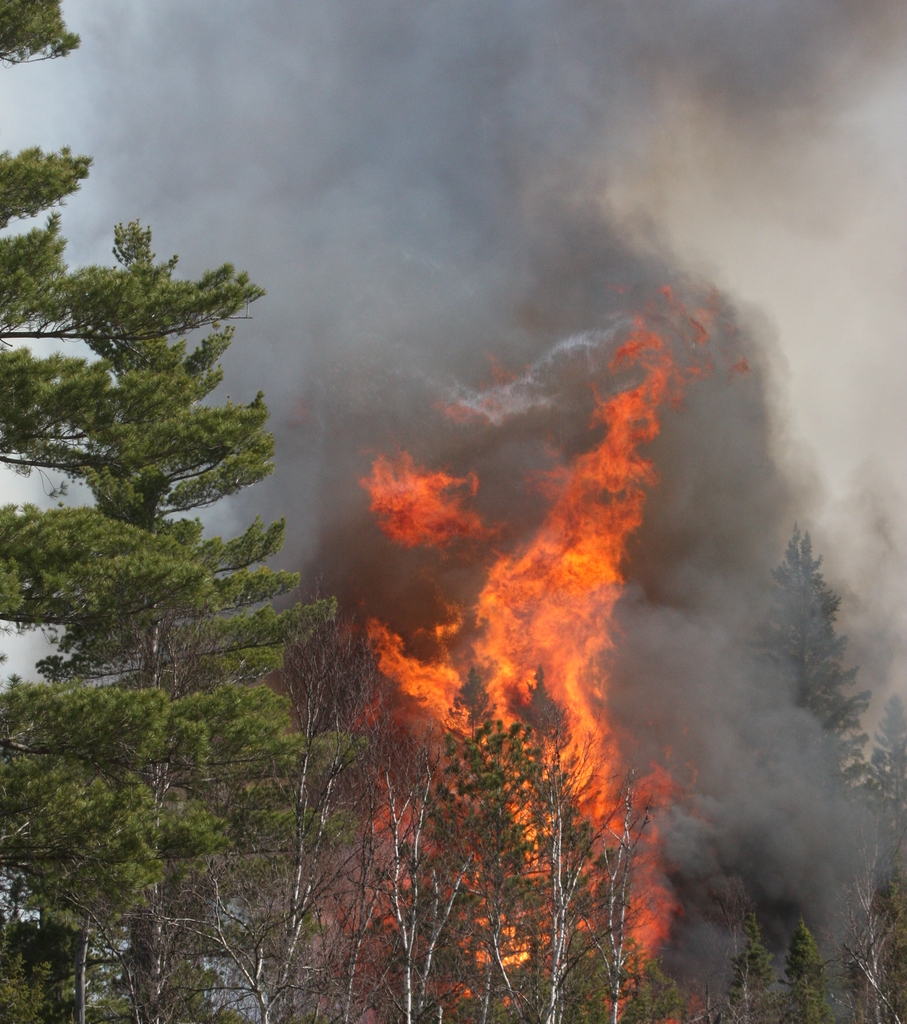Support the Timberjay by making a donation.
Showers bring relief to firefighters
Widespread light rain that fell across the area on Thursday has helped reduce fire danger. That, combined with a weekend forecast predicting continuing chances of showers, has allowed fire officials …
This item is available in full to subscribers.
Attention subscribers
To continue reading, you will need to either log in to your subscriber account, below, or purchase a new subscription.
Please log in to continue |
Showers bring relief to firefighters
Widespread light rain that fell across the area on Thursday has helped reduce fire danger. That, combined with a weekend forecast predicting continuing chances of showers, has allowed fire officials to lower danger levels and to begin to demobilize resources.
But fire officials warn that until significantly more rain falls, high fire danger will continue to plague the area whenever dry and windy weather returns.
Little precipitation over the past two months, combined with desert-like humidity and wind in recent weeks, has sent every major fire indicator to very high to extreme levels. “The closest comparison is the spring of 1977, and we’re sliding past that,” said Jim Hinds, a fire specialist with the Minnesota DNR on Monday. “We’ll likely set records,” he said.
Hinds was working from the Tower DNR headquarters this week as part of a Type II administrative team that was assisting local firefighters with management of what is now being called the Tower Complex, for the six fires located in the Tower area. That administrative team was demobilized as of Thursday.
But prior to Thursday’s showers, area fire crews had been kept busy. Dry and windy weather on Wednesday helped fan two fires, one near Babbitt and the other near Ely, but the rapid response of fire crews kept both blazes relatively small.
Fire crews, some from as far away as Nevada, had been hampered in their efforts to mop up area fires by the extraordinarily dry soil conditions for this time of year. That allowed fires to burn into the duff and root systems of trees, where it can smolder for many days.
Extremely low humidity is also playing a role, said Hinds. “The low humidities have been remarkable, and the lower the humidity, the easier to ignite a fire,” he said. Under normal circumstances, most activities won’t start a fire. But when humidity is low and conditions are dry, “just about anything that can throw a spark will start a fire,” said Hinds. In recent days, said Hinds, some fires have started from the heat of vehicle catalytic converters, or from logging equipment.
And once fires do start, Hinds said they burn much more aggressively than under normal conditions. “That’s changing the approach to how we address these fires. Normally, we can use direct attack. In most cases, right now, ground forces won’t be able to fight these fires directly.” Typically, firefighters can’t safely fight fires directly from the ground when flame heights exceed four feet. In the case of the Spring Mine Lake fire, flame lengths were estimated at 200 feet. That’s prompted the DNR and the U.S. Forest Service to deploy aircraft for most fires, said Hinds.
The weekend forecast does offer fire officials some cause for optimism, but Hinds said it’s too early to know how much relief might come. At the same time, firefighters were warily eyeing the forecast for scattered thunderstorms on Friday. “What a mess that could make,” said Hinds.
Lightning fires are unusual this time of year, but Hinds said the conditions this year would easily support ignition from lightning strikes. “Anytime the duff moisture code is above 25, lightning is a problem. Right now, we’re at 60,” he said.
While rain would certainly help, Hinds said a lot of rain is needed to dampen the danger. “We’re saying we need two inches of rain. An inch will set this back, and allow for green-up. A quarter inch gives us a day off. A tenth we don’t even pay attention to,” he said.









